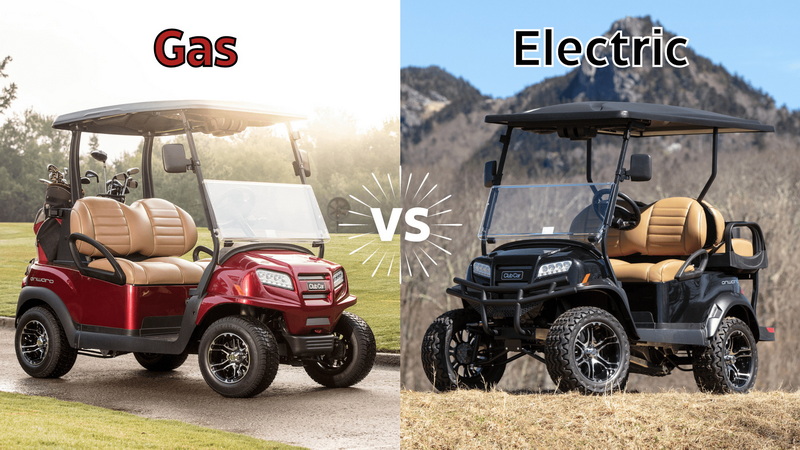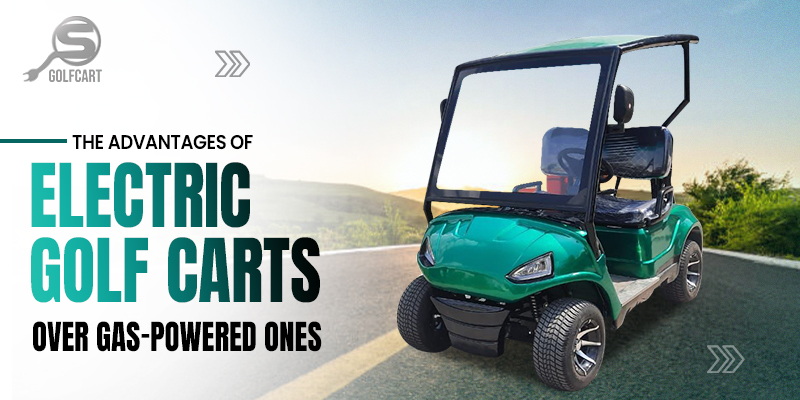Content Menu
● Understanding Golf Carts
● Advantages of Gas Golf Carts
>> Power and Performance
>> Refueling Convenience
>> Longer Range
● Disadvantages of Gas Golf Carts
>> Environmental Impact
>> Noise Levels
>> Maintenance Costs
● Advantages of Electric Golf Carts
>> Eco-Friendly Option
>> Lower Operating Costs
>> Quiet Operation
● Disadvantages of Electric Golf Carts
>> Limited Range
>> Charging Time
>> Battery Replacement Costs
● Key Considerations When Choosing
● Conclusion
● Frequently Asked Questions
>> 1. What is the average lifespan of a golf cart battery?
>> 2. Can I modify my gas golf cart?
>> 3. Are there any restrictions on using gas-powered golf carts?
>> 4. How do I maintain my electric golf cart?
>> 5. Which type of golf cart is better for hilly terrains?
When considering the purchase of a golf cart, one of the most significant decisions you'll face is whether to choose a gas-powered or electric model. Each type has its own set of advantages and disadvantages, making it essential to weigh your options carefully based on your specific needs, preferences, and budget. This comprehensive guide will explore the key factors to consider when deciding between gas and electric golf carts, helping you make an informed choice.

Understanding Golf Carts
Golf carts, originally designed for transporting players and their equipment around the golf course, have evolved into versatile vehicles used in various settings, including gated communities, farms, and recreational areas. The two primary types of golf carts are:
- Gas Golf Carts: Powered by an internal combustion engine that runs on gasoline.
- Electric Golf Carts: Operated by rechargeable batteries that power an electric motor.
Advantages of Gas Golf Carts
Power and Performance
Gas golf carts generally offer more power than their electric counterparts. They are equipped with engines that can handle steep hills and rough terrain better than electric models. This makes them ideal for users who need a cart for rugged environments or longer distances.
Refueling Convenience
Refueling a gas cart is quick and straightforward. You can fill up at any gas station in just a few minutes, allowing for extended use without the downtime associated with charging batteries.
Longer Range
Gas golf carts typically have a longer range than electric models. Depending on the size of the fuel tank, they can travel 100 to 250 miles on a single tank of gas, making them suitable for longer outings or trips.

Disadvantages of Gas Golf Carts
Environmental Impact
Gas golf carts emit exhaust fumes, contributing to air pollution. This factor is increasingly important for environmentally conscious buyers who prefer greener alternatives.
Noise Levels
Gas-powered carts tend to be noisier than electric models. The sound of the engine can be disruptive in quiet settings like residential neighborhoods or golf courses.
Maintenance Costs
While gas carts may have lower initial costs, they often incur higher long-term maintenance expenses due to regular oil changes, filter replacements, and other mechanical upkeep.
Advantages of Electric Golf Carts
Eco-Friendly Option
One of the most significant benefits of electric golf carts is their zero-emission operation. They produce no exhaust fumes, making them an environmentally friendly choice.
Lower Operating Costs
Electric carts usually have lower operating costs over time. Charging costs are generally less than refueling with gasoline, and they require less frequent maintenance due to fewer moving parts.
Quiet Operation
Electric golf carts operate almost silently. This feature makes them ideal for use in quiet environments where noise pollution is a concern.

Disadvantages of Electric Golf Carts
Limited Range
Electric golf carts typically have a shorter range compared to gas models. Depending on battery capacity and usage conditions, they may only travel 20 to 50 miles on a single charge before needing to be recharged.
Charging Time
Recharging an electric cart can take several hours, which may not be convenient for users who need quick turnaround times between uses.
Battery Replacement Costs
The batteries in electric golf carts can be expensive to replace, often costing between $800 and $2,000 depending on the type and brand. Proper maintenance is crucial to extend battery life.
Key Considerations When Choosing
When deciding between a gas or electric golf cart, consider the following factors:
- Usage: How often will you use the cart? For frequent short trips within a community or golf course, an electric cart may suffice. For longer distances or varied terrain, consider a gas model.
- Environmental Concerns: If reducing your carbon footprint is important to you, an electric cart is the clear choice.
- Maintenance Preferences: If you prefer low-maintenance options, electric carts generally require less upkeep than gas models.
- Budget: Factor in both the initial purchase price and long-term operating costs when making your decision.
Conclusion
Choosing between a gas or electric golf cart ultimately depends on your specific needs and preferences. If you prioritize power, range, and quick refueling options, a gas-powered cart may be the best fit for you. However, if you value environmental sustainability, lower operating costs, and quieter operation, an electric model would likely be more suitable.
Before making your purchase, take the time to assess how you plan to use your golf cart and consider test-driving both types to see which one feels right for you.

Frequently Asked Questions
1. What is the average lifespan of a golf cart battery?
Electric golf cart batteries typically last between 5 to 7 years with proper maintenance.
2. Can I modify my gas golf cart?
Yes, gas golf carts can be modified with performance parts for increased speed and power.
3. Are there any restrictions on using gas-powered golf carts?
Some communities and parks have restrictions against gas-powered vehicles due to noise and emissions; always check local regulations before purchasing.
4. How do I maintain my electric golf cart?
Regularly check battery water levels (if applicable), keep it charged properly, and ensure connections are clean to maximize battery life.
5. Which type of golf cart is better for hilly terrains?
Gas-powered golf carts are generally better suited for hilly terrains due to their higher power output compared to electric models.











































